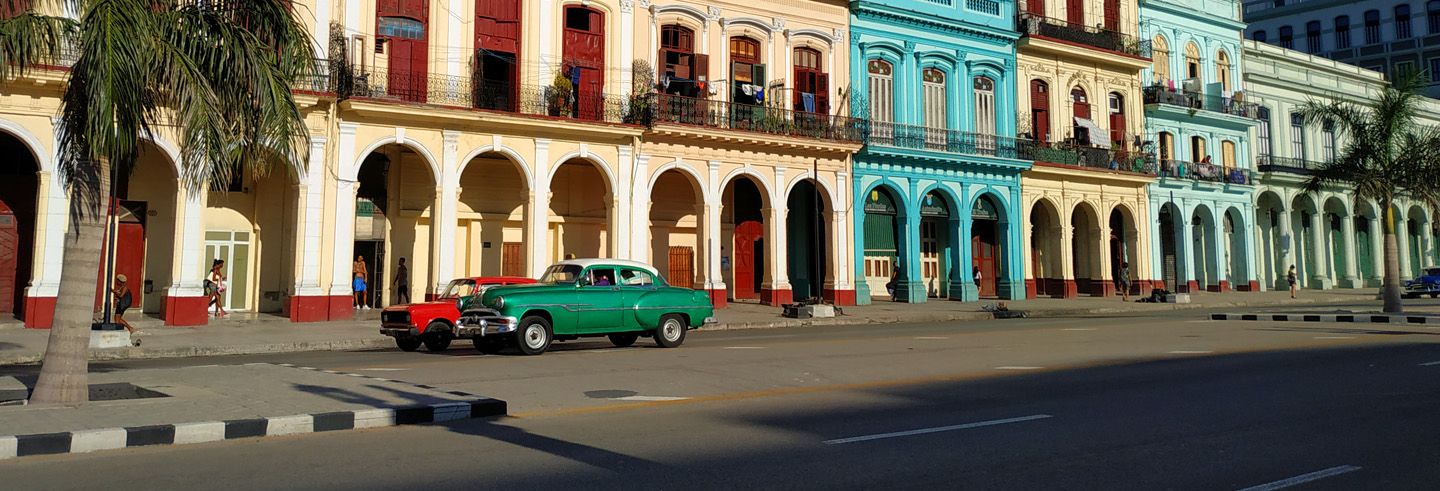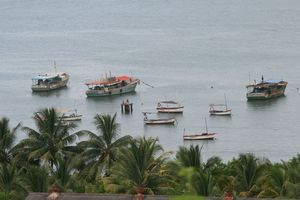

Fishing in Cuba
Become a fishing enthusiast in Cuba, considered a paradise for its practice.
If you are not a fishing enthusiast, you have to try it in Cuba! Here you will find your particular paradise.
Its location is perfect: the Florida and Bahamas Stratis, just as the deep basins and trenches, serve as ecologic barriers in the distribution and transit of the species which inhabit in the Cuban insular platform; at the same time that great oceanic currents connect with the migratory routes and has a rich diversity of species.
These conditions attract a great quantity and variety of fishing species to the Cuban littoral, full of coral reefs, as for instance, rawfishes and needlefish, but you can also see prawns, lobsters, crab, etc. The further you get from the island’s continental platform, the bigger will be the samples inhabiting its waters. On the depths you can find rawfises, swordfishes, blue marlins.
However, do not forget to take into account that the hurricane seasons begins in September, which can become this activity in a risky sport. The best time for fishing is between April and September.
In the Northern coast are plentiful of sailfish, sword fishes, tuna fishes, and needlefishes. There excellent prospects in front of the coasts of Cayo Guillermo, where Ernest Hemingway spend many hours practicing one of his favorite sports. So much so that every month of Juse it is celebrated the Ernest Hemingway Needlefish Fishing International Tourney. It is one of the oldest in the world, since is only preceded by the New Scotland’s Tuna World Cup and the Shad Tourney in Mexico.
Fishing modalities:
Fly Fishing: The fishing is done lower with artificial bait, which means, in crystalline waters with few depth, around 30 cm. You will not a find a better place in the world than the Ciénaga da Zapata Swamp, in the province of Matanzas.
Spinning Fishing: At medium depths of 3m., depending on the species you are looking fro, you should use decoys or bigger and colourful baits, just as roads of even 270 m. of line. Any point in the Cuban littoral is competent for this modality.
Half bottom fishing: It is done in deeper waters, where the boat is anchored, using imitations of fishes as decoys and an extra weight for the hook, so the line can go down without problems. You must be really patience to trap a good size sample in dams like Hanabanilla and Zaza.
Deep-sea fishing: It is the most common kind of fishing in Cuba, but also the one which requires a more advanced equipment. Basically there are two types of fishing in open sea depending on the location of the shoal: 19 The “troleo” or “trolling”, which consists of keeping the boat at a constant speeds and carrying the lines at low depths. 2) Bottom fishing, when the boat stops in deep waters with hooks loaded with downriggers; some decoys made of lead which make the line go down quickly.
General Regulations for the practice of Sports Fishing in Cuba
Permission or Fishing license to any modality of fishing, which can be obtained by presenting the Passport.
The clients will be informed about the Fishing Regulations, just as other related details by the specialised staff.
Most common species:
Fly Fishing: bandit, harvestfish, barracuda, sea bass, shad.
Deep-sea fishing: needle, blue marlin, golden, tuna, peacock wrasse, barracuda, sawfish, cubera.
FISHING IN THE LAKES OF CUBA
Leonero Lake, in the municipality of Cauto River in the province of Granma, hosts one of the best competitions of the trout fishing in Latin America, with a convening power unrivalled. The fishing was commercialised as a touristic product in 1983 under the name of Viramas in a game preserve of the same area, nearby the Cauto River’s mouth. According to the story, it is a dangerous place due to the floating vegetation cays which are moved by the wind and can become a trap.
Redonda Lake, located at the North of the province of Ciego de Ávila, is one of the best enclosures in Cuba for the trout or large mouth bass fishing, with a medium weight of 7 kg. and huge big mouth sea basses.
Big Lake or Algodonal Lake, is a dam of the river waters of Salado River, located in the province of Pinar del Río. In 1980s it had a great recognition as touristic fishing centre.
FISHING IN THE SOUTHERN LITTORAL OF CUBA
Jardines de la Reina
It might be nowadays the best place for fishing in the whole Caribbean, since from the beginning of the 90s it has been under a special regime of environmental protection, which forbids commercial fishing and the capture of other species such as turtles.
Designated as National Park in 2002, this 250 virgin islands’ archipelago is located 50 miles away from the South central coast of Cuba, in front of the provinces of Camagüey and Ciego de Ávila. The access is done by sea from the little fishing village of Júscaro, in the South of Ciego de Ávila.
Along with the contemplative diving, the sports fishing is one of the most promoted activities and best sold in the area. The only modality allow is the Catch & Release, but it is not odd to capture more than twenty different species in just a few days: shad, sea bass, bandit, red porgy, wimple piranha, carangidae, grouper, wreckfish, itajara, grouper, etc. It is just only allowed the capturing of a limited quantity of fishes to feed the clients on the fishing or diving stay.
Cienfuegos
If you are a lover of the sealife and sailing, then you have to visit the Cuban province of Cienfuegos. A special place where you can enjoy modern infrastructure destined to this kind of tourism, because the fishing in the usual pastime, as in the coast of the Caribbean sea as in the nearby Hanabanilla impounding, one of the biggest ones in Cuba, where there are plenty of trouts and havanillas.
Located 250 km. far from Havana, Cienfuegos has one of the best marines of the country, the marine Marlin Cienfuegos, with a good depth of water, quiet waters, entrance of the bag, 88 km2 of extension, numerous mooring points for different boat types and services, and of course a beauty of a city declared Cultural Heritage of the Humanity by the UNESCO.
Largo del Sur Cay
The region is excellent for deep-water fishing, but it has a high standard of environmental protection which is part of the Marino de Punta Francés National Park, dating from 1978; then its waters are not frequently visited by man and it has a high density of marine species.
It is possible to do fly fishing, generally during trips which last various days. You can mainly capture species such as the bandit, the wimple piranha and the shad, just as the barracuda, snook, red porgy, Jack Crevalle and sharks.
Ciénaga de Zapata Swamp
It has the major wetland of the insular Caribbean and the most complex karstic drainage system of Cuba. The Ciénaga de Zapata Swamp National Park, since 1985, is a Biosphere Worldwide Reservation since 2000.
The best known fishing areas of this area are: The Brito Salinas and the Hatiguanico River.
Brito Salinas. A great salty water lake with few depth and important bandits, wimple piranhas and barracudas populations. The fishing is done fording from the flat bottomed boat “armendariz” type by the fly technique.
Hatiguanico River. It is born in a huge sweet crystalline water spring, and it flows into the Broa cove. The most customary species of this area are the shad and the sea bass. On its course you can also find manatees, Cuban gars and many other species. Fishing can be done from the boat or techniques such as fly or spinning, although the trailing can give results.
FISHING IN THE NORTHERN LITTORAL OF CUBA
Roman Cay
This island belongs to the Sabana-Camagüey Archipelago or Jardines del Rey, with huge shad concentrations between may and july, although fishing is mainly dedicated to bandit and wimple piranha. There are also plenty sharks, red porgies and chilean jack mackerel, but if you are interested in fishing barracudas, you will have the opportunity to capture big ones with fly if you have toothy critters wire of at least 40 pounds.
Guanahacabibes Peninsula
It has the most inhabited waters of the country thanks to the great preservation work of the government, but fishing is forbidden except for some agencies which practice ecologic planned tourism and just for “capturing and freeing” with a great variety of species: red porgy, grouper, rabirrubia, lane snapper, wreckfish, barracuda, shark, wahoo, sawfishes, wimple piranha, Galician, cibi, jiguagua, golden, tuna and marlin or sailfish.
Other interesting places are Ana María Cay, Guillermo Cay and Coco Cay, Varadero and Havana.
Why "Trip Cuba"?
Trip Cuba is an organization of Cuban agencies whose objectives are:
- ✓ To make Cuba, its culture and its heritage known.
- ✓ To promote sustainable tourism.
- ✓ To support the local economy, prioritizing direct contact with Cuban agencies.
Travel Agencies
If you are a travel agency or tour operator and you are looking forward to any assistance or collaboration to plan trips to Cuba, rely on our extensive experience
Copyright www.TripCuba.Org © - All rights reserved
All our agencies are duly registered in the National Registry of Travel Agencies of the Chamber of Commerce of the Republic of Cuba.







